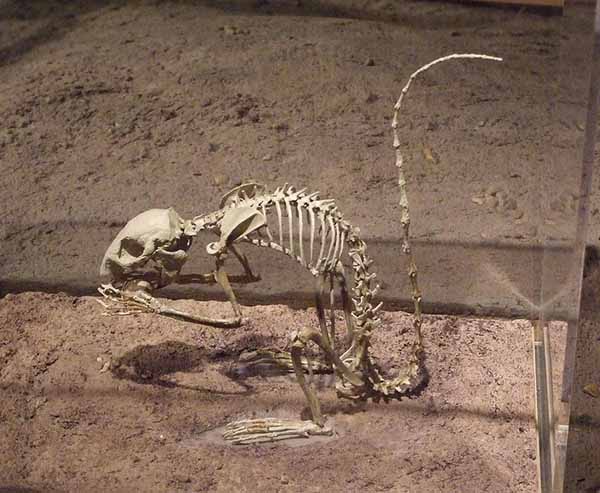

The earliest known squirrels date from the Eocene and are most closely related to the mountain beaver and to the dormouse among living rodent families. Read more ...
Frozen Fur Ball Turns Out To Be 30,000-Year-Old Ice Age Squirrel IFL Science - March 31, 2023
Don’t be mistaken by this unassuming fur ball – it’s actually the curled-up mummified remains of a 30,000-year-old Arctic ground squirrel. Look closely and you'll see it's in such remarkable condition that it's possible to make out its tiny claws. The discovery was recently revealed by the Yukon Beringia Interpretive Centre. They explained that it was found in the frosty depths of Canada's Yukon near Hester Creek in the Klondike Gold Fields, Tr'ondek Hwechʼin Traditional Territory.
Earliest flying mammal discovered BBC - December 13, 2006
A fossil uncovered in China suggests mammals were trying out flight at about the same time - or even earlier - than birds. Mammals took to the skies at least 70 million years earlier than previously thought, scientists say. A fossil uncovered in China suggests mammals were trying out flight at about the same time - or even earlier - than birds. The researchers said the squirrel-sized animal, which lived at least 125 million years ago, used a fur-covered skin membrane to glide through the air. The creature was so unusual, they said, it belonged to a new order of mammals. The US-Chinese team said Volaticotherium antiquus, which means "ancient gliding beast", belonged to a now extinct ancestral line and was not related to modern day flying mammals, such as bats or flying marsupials.
The fossil was discovered in the Inner Mongolian region of China. The rock beds it was found in date to at least 125 million years ago to the Mesozoic Era, a time when dinosaurs roamed the Earth. With a length of 12-14cm (5-6in) and weight of about 70g (3oz), the creature was comparable in size and shape to modern-day flying squirrels. It had a fold of fur-covered skin membrane that stretched between the creature's fore and hind limbs. This large membrane combined with its light weight suggested it was an agile glider, the researchers said, although probably not deft enough to capture its prey mid-flight.
ANCIENT AND LOST CIVILIZATIONS